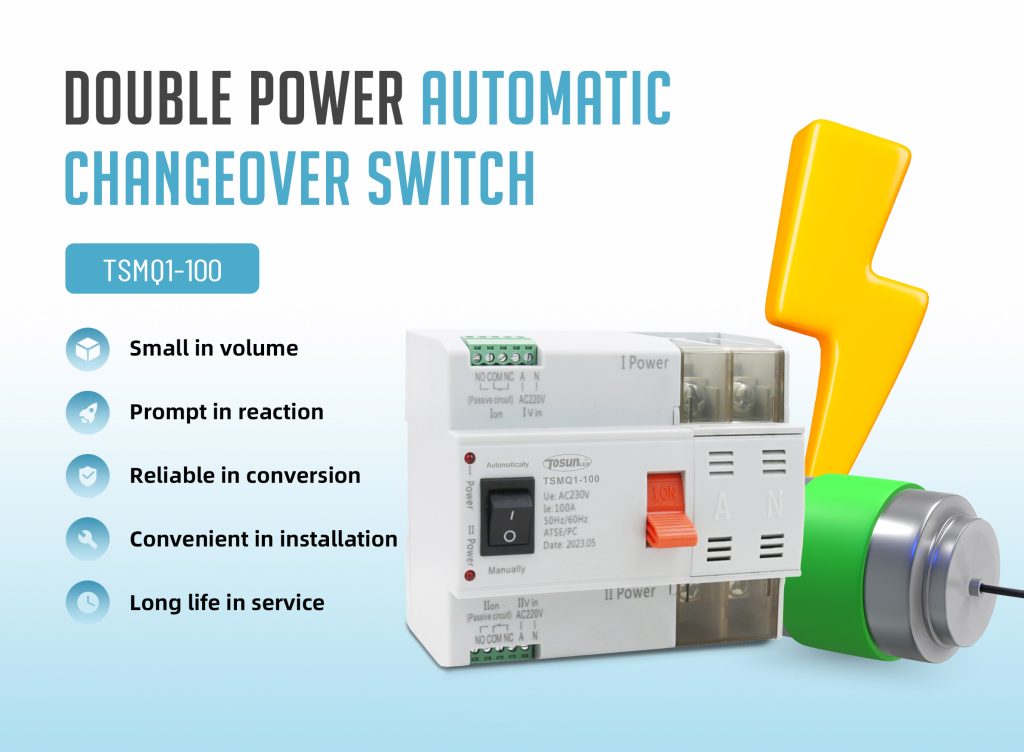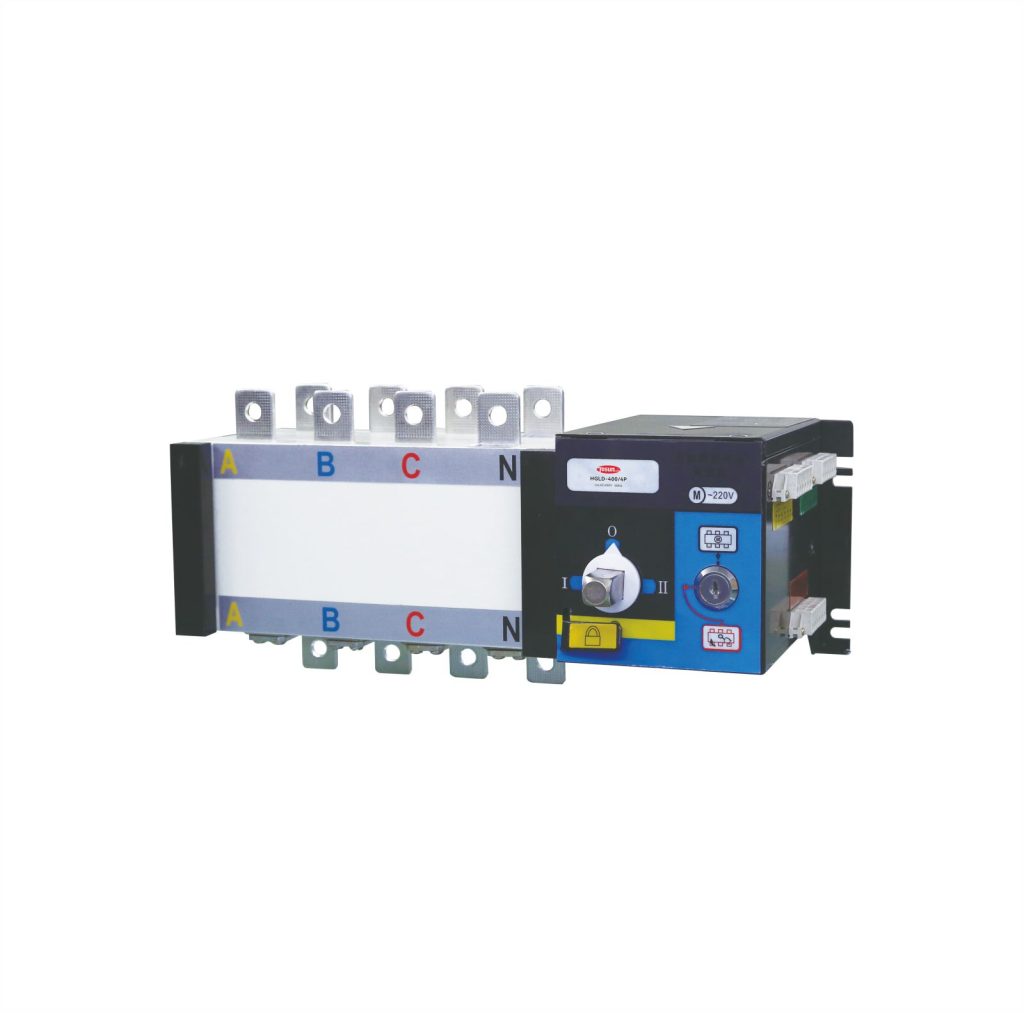Choosing the Best Electric Automatic Transfer Switch for Your Needs
Table of Contents
ToggleAn electric generator automatic transfer switch (ATS) ensures seamless power during outages by switching to generator power automatically. This guide will explain its role and help you choose the best one for your needs.
Key Takeaways
- An automatic transfer switch (ATS) is crucial for maintaining uninterrupted power by managing transitions between utility power and generator power during outages.
- There are three main types of ATS: open transition, closed transition, and bypass isolation, each suited for specific applications and operational needs.
- Selecting the appropriate ATS involves ensuring compatibility with generator voltages, considering the total amperage of circuits, and evaluating specific installation requirements for optimal performance.
Understanding the Role of an Electric Generator Automatic Transfer Switch

An automatic transfer switch (ATS) is a vital device that manages the switch between utility power and generator power. Here’s a straightforward breakdown:
- Purpose: When the main power source fails, the ATS activates, restoring power in seconds to ensure continuous electricity flow. This quick response is crucial for places like hospitals, data centers, and businesses that cannot afford downtime.
- Functionality: The ATS constantly monitors the primary power source for voltage and frequency. If it detects an issue, it swiftly switches from utility power to generator power. This ensures your backup power supply is always ready, maintaining operations smoothly.
- Importance:
- In hospitals, an ATS prevents critical medical equipment from shutting down during outages, safeguarding patient safety.
- For businesses, it avoids disruptions that could lead to revenue loss and reduced productivity.
Understanding these differences helps in choosing the right ATS for your specific needs. An ATS is essential for keeping operations seamless during power interruptions.
Key Types of Automatic Transfer Switches
There are three main types of automatic transfer switches: open transition, closed transition, and bypass isolation. Understanding these types will help you choose the best one for your needs.
- Open Transition ATS: This is the most common and budget-friendly option. It works on a “break-before-make” principle, meaning it disconnects from utility power before connecting to generator power. This can cause a brief power break, but it’s usually fine for most non-essential settings.
- Closed Transition ATS: This type allows utility and generator power to overlap briefly, ensuring no power break during the switch. It’s perfect for critical places like hospitals and data centers where even a short power outage isn’t acceptable.
- Bypass Isolation ATS: This type lets you perform maintenance without cutting off power. It’s ideal for critical settings where constant power is crucial, like hospitals and data centers. It allows the ATS to be isolated for testing or maintenance while keeping the power on.
Knowing these types and their benefits helps you pick the right switch for your needs. Whether you’re running a data center, hospital, or business, choosing the right ATS is key to ensuring reliable power solutions.
How to Select the Right Automatic Transfer Switch for Your Generator

Choosing the right automatic transfer switch (ATS) for your generator is important to keep your power running smoothly during outages. Here’s a simple guide to help you:
- Check Compatibility: Ensure the ATS matches the generator voltages of your existing circuits and equipment. This prevents damage and ensures efficiency. For example, if your generator operates at 240 volts, the ATS should also support 240 volts.
- Assess Power Needs: Calculate the total amperage of all circuits you want to power during an outage. The ATS should handle this load without overloading. For instance, if your circuits require 100 amps, choose an ATS that supports at least 100 amps.
- Consider Wattage: Match the wattage of your loads to the generator output. A mismatch could lead to insufficient power or damage. If your equipment needs 20,000 watts, ensure both your generator and ATS can handle this.
- Installation Needs: Some setups may need advanced ATS systems, like closed transition or bypass isolation, for seamless power transfer. These are ideal for places like hospitals where power interruptions aren’t an option.
- Safety and Convenience: Choose an ATS that simplifies power management and boosts efficiency. Regular maintenance and inspections are key to keeping it in top shape and following safety rules.
By focusing on these factors, you can pick an ATS that offers reliable power solutions tailored to your needs.
Summary
In summary, selecting the best electric generator automatic transfer switch involves understanding its function, the types available, and your specific installation needs. An ATS, such as those offered by TOSUNlux, ensures seamless power supply by managing transitions between utility and generator power. By choosing the right ATS, you enhance operational efficiency and gain peace of mind, knowing your power supply is reliable and uninterrupted.
Frequently Asked Questions
How do I know which type of ATS I need?
To determine the type of ATS you need, assess your specific requirements: choose an open transition ATS for cost-effectiveness in non-critical environments, or opt for a closed transition or bypass isolation ATS for seamless power transfer in critical applications.
Why is regular maintenance important for ATS?
Regular maintenance is crucial for an ATS as it ensures optimal functioning and compliance with safety regulations, thereby preventing potential issues and ensuring reliable power solutions. This proactive approach mitigates risks and enhances system longevity.
Can I install an ATS myself?
It is advisable to hire a qualified electrician to install an ATS, as proper setup and compliance with safety standards require professional expertise. Attempting to do it yourself may lead to safety risks and non-compliance issues.
What regulations should I be aware of when installing an ATS?
When installing an ATS, you must ensure compliance with local electrical codes and standards, as well as conduct regular inspections and maintenance to adhere to regulatory requirements and enhance safety.
Tel: +86-577-88671000
E-mail: ceo@tosun.com
Skype: tosunelectric
Wechat: +86-139 6881 9286
WhatsApp: +86-139 0587 7291
Address: Room No.1001 Wenzhou Fortune Center,Station Road, Wenzhou, China
REQUEST A QUOTE
WhatsApp us
 : +86-139 0587 7291
: +86-139 0587 7291 English
English Español
Español Русский
Русский Français
Français العربية
العربية Português do Brasil
Português do Brasil Українська
Українська Türkçe
Türkçe Polski
Polski Nederlands
Nederlands Italiano
Italiano Bahasa Indonesia
Bahasa Indonesia हिन्दी
हिन्दी اردو
اردو አማርኛ
አማርኛ Հայերեն
Հայերեն ไทย
ไทย Монгол
Монгол فارسی
فارسی Shqip
Shqip Ελληνικά
Ελληνικά


